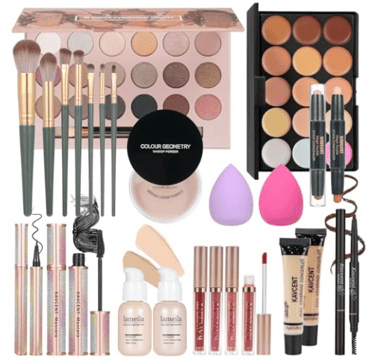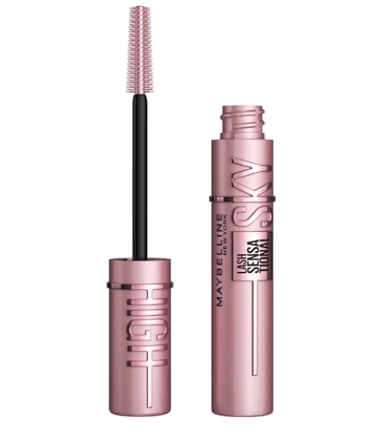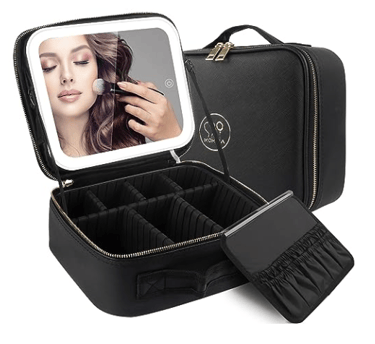Is Your Makeup Safe? A Comprehensive Guide to Expiry Dates and Shelf Life
MAKE-UP
8/20/20254 min read


Makeup has the power to transform a look, boost confidence, and highlight creativity. But here’s the truth many beauty lovers overlook: your favorite products don’t last forever. Whether it’s a mascara you’ve had for months, a foundation that’s been sitting in your drawer, or a lipstick you only use on special occasions, every cosmetic has a shelf life.
Using products past their prime doesn’t just reduce performance it can pose serious risks for your skin and overall health.
This guide breaks down everything you need to know about makeup expiry dates, how to read labels, product-specific lifespans, and tips to keep your beauty routine safe and effective.
Why Makeup Expiry Dates Matter
We’re used to checking expiration dates on food, but most people don’t treat cosmetics with the same caution. The reality is: once opened, makeup is exposed to air, light, and bacteria, which slowly degrade the formula.
Expired makeup can:
Cause eye infections (especially with mascaras and eyeliners).
Lead to clogged pores and breakouts.
Trigger allergic reactions or irritation.
Lose color, texture, or effectiveness.
Paying attention to shelf life isn’t about being wasteful it’s about protecting your skin and health.
How to Read Expiry Labels
Not all cosmetics have a printed expiration date. Instead, most use the Period After Opening (PAO) symbol: a small open jar icon with a number inside (e.g., 6M, 12M, 24M).
This number tells you how long the product is safe to use once opened:
6M → good for 6 months.
12M → safe for 1 year.
24M → lasts up to 2 years.
If there’s no PAO symbol, check for a batch code and use online databases to find its age. Some natural brands may also print a fixed expiration date.
Shelf Life by Product Type
Different products break down at different speeds depending on formula, packaging, and usage. Here’s a quick guide:
Mascara & Liquid Eyeliner: 3–6 months → prone to bacteria, high risk for eye infections.
Liquid Foundation & Concealer: 6–12 months → watch for separation, color shifts, or oxidation.
Lipstick, Lip Gloss, Lip Liner: 12–24 months → may dry out, lose pigment, or develop a waxy smell.
Powder Products (blush, bronzer, eyeshadow): Up to 2 years → last longer, but keep brushes clean to avoid contamination.
Cream Products (blush, highlighter, eyeshadow): 6–12 months → check for cracking or sour smell.
Pencils (eyeliner, brow pencil): 1–2 years → sharpen regularly to remove bacteria.
Nail Polish: Up to 2 years → toss if it thickens or separates beyond repair.
Skincare-Infused Makeup (with SPF/serums): Shorter shelf life → active ingredients degrade faster.
Signs Your Makeup Has Expired
Even if you don’t remember when you bought it, your products will usually give warning signs:
Strange or sour smell.
Texture changes (clumping, separating, drying).
Color fading or turning unusual shades.
Irritation or breakouts after application.
When in doubt, throw it out.
Tips to Extend Makeup Shelf Life
While nothing lasts forever, good habits can help keep your products safe and effective longer:
Store makeup in a cool, dry place away from direct sunlight.
Wash brushes and sponges regularly.
Avoid sharing eye or lip products.
Keep lids tightly closed after use.
Mark the opening date on each product with a sticker or marker.
Natural & Organic Makeup: Handle With Care
Clean beauty and natural makeup are increasingly popular but they often expire faster. Without strong preservatives, these products are more likely to develop mold or bacteria.
Extra precautions:
Refrigerate if recommended.
Use clean tools (not fingers) to avoid contamination.
Watch for quick changes in smell or consistency.
The Dangers of Ignoring Expiry Dates
Using expired products isn’t just a small risk it can lead to serious issues like:
Eye infections (e.g., conjunctivitis).
Skin irritation, rashes, or fungal growth.
Worsening acne, rosacea, or other conditions.
Eye and lip products, which touch sensitive areas, carry the highest risks when expired.
When to Replace vs. When to Sanitize
Replace: If there’s mold, a strong odor, heavy separation, or irritation after use.
Sanitize: Powders and lipsticks can sometimes be cleaned with alcohol wipes and a tissue if they’re slightly contaminated.
If you’re unsure, it’s always safer to replace.
Makeup Hoarding: Letting Go of Favorites
We all have that beloved lipstick or limited-edition palette we don’t want to throw away. But holding onto expired products isn’t worth the health risks. If it’s sentimental, consider retiring it as a keepsake not as part of your routine.
Final Thoughts
Makeup is meant to enhance your beauty not put your skin at risk. By learning how to read expiry labels, recognize warning signs, and follow safe storage habits, you can enjoy your favorite products without worry.
Remember: if it smells odd, looks different, or causes irritation it’s time to let it go. Your skin deserves products that are safe, fresh, and effective.
Taking just a few minutes to review your makeup bag could save you from breakouts, infections, and frustration. Healthy skin starts with clean, safe makeup.

Maybelline New York Lash Sensational Sky High Washable Eyelash Mascara Makeup, Volumizing, Lengthening, Defining, Curling, Multiplying, Buildable Formula, Very Black, 7.2 ml
MAKE-UP
MAKE-UP
MAKE-UP
MOMIRA Travel Makeup Bag Cosmetic Bag Makeup Organizer Bag Makeup Train Case Gift for Women Black
with Lighted Mirror, Adjustable Brightness, Waterproof, 3 Color Scenarios
Makeup Kit for Women Full Kit Makeup Sets for Teens Makeup Gift Set for Women Teen Girls Eyeshadow Palette Lip Gloss Make up Gift Set for Christmas
BESTSELLERS
NEW COLLECTION






🌸 Dazzlea Beauty
Dazzlea Beauty is your ultimate destination for everything that celebrates beauty, confidence, and self expression. We bring you a world of skincare, nails, hair, and makeup inspiration designed to help you embrace your individuality and glow with confidence. Whether you’re seeking everyday essentials to elevate your natural look or bold new styles that make a statement, Dazzlea Beauty is here to guide you every step of the way. Our mission is to inspire, empower, and provide you with the beauty tips, trends, and updates you need to feel radiant inside and out.
Join our community for beauty insights.
Contact Us
📧 info@dazzleabeauty.com
© 2025. All rights reserved.
🌐 Follow Us
Stay connected for beauty tips
